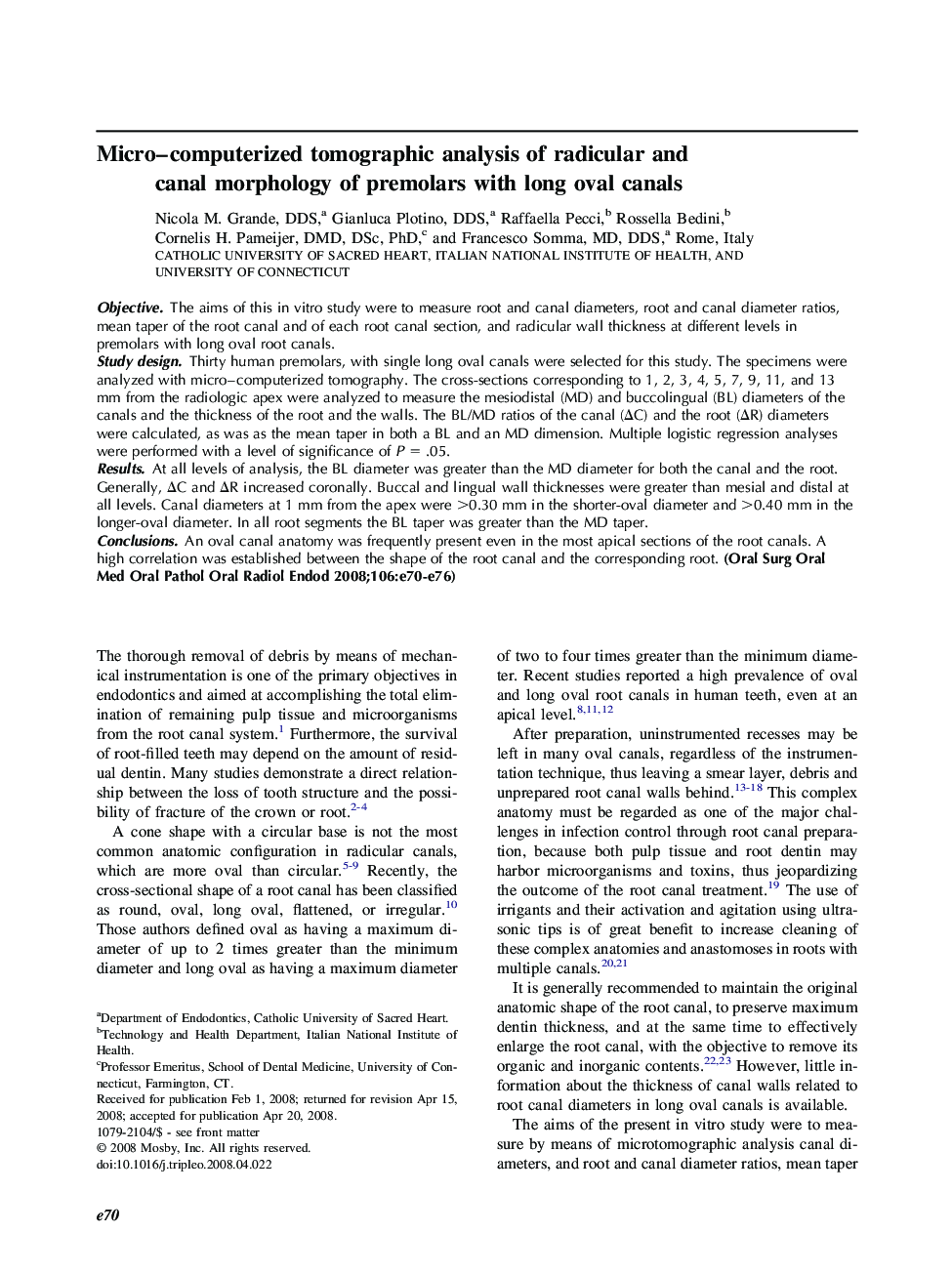| Article ID | Journal | Published Year | Pages | File Type |
|---|---|---|---|---|
| 3168536 | Oral Surgery, Oral Medicine, Oral Pathology, Oral Radiology, and Endodontology | 2008 | 7 Pages |
ObjectiveThe aims of this in vitro study were to measure root and canal diameters, root and canal diameter ratios, mean taper of the root canal and of each root canal section, and radicular wall thickness at different levels in premolars with long oval root canals.Study designThirty human premolars, with single long oval canals were selected for this study. The specimens were analyzed with micro–computerized tomography. The cross-sections corresponding to 1, 2, 3, 4, 5, 7, 9, 11, and 13 mm from the radiologic apex were analyzed to measure the mesiodistal (MD) and buccolingual (BL) diameters of the canals and the thickness of the root and the walls. The BL/MD ratios of the canal (ΔC) and the root (ΔR) diameters were calculated, as was as the mean taper in both a BL and an MD dimension. Multiple logistic regression analyses were performed with a level of significance of P = .05.ResultsAt all levels of analysis, the BL diameter was greater than the MD diameter for both the canal and the root. Generally, ΔC and ΔR increased coronally. Buccal and lingual wall thicknesses were greater than mesial and distal at all levels. Canal diameters at 1 mm from the apex were >0.30 mm in the shorter-oval diameter and >0.40 mm in the longer-oval diameter. In all root segments the BL taper was greater than the MD taper.ConclusionsAn oval canal anatomy was frequently present even in the most apical sections of the root canals. A high correlation was established between the shape of the root canal and the corresponding root.
